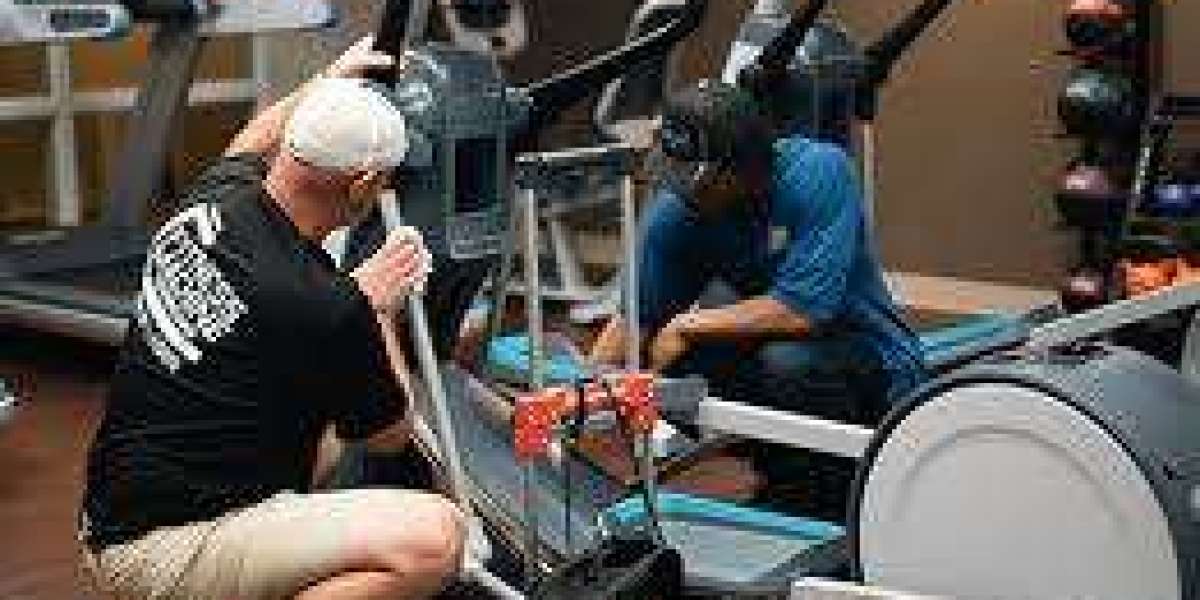Having a home gym is one of the best investments for your fitness journey. It gives you the flexibility to work out whenever you want, saves time on commuting to a fitness center, and provides privacy. However, just like a car or any other machinery, your home gym equipment requires proper care and maintenance. Neglecting routine maintenance can lead to breakdowns, reduced equipment lifespan, and even safety risks during workouts.
In this comprehensive guide, we will cover everything you need to know about home gym equipment maintenance, including cleaning tips, lubrication, troubleshooting, and professional servicing advice.
Why Home Gym Equipment Maintenance Matters
Many people assume that once they set up their home gym, the equipment will run smoothly forever. In reality, gym machines and free weights go through constant stress due to regular usage. Without proper care, they can lose efficiency, make unusual noises, or even become dangerous.
Here’s why maintenance is essential:
Longevity – Well-maintained machines last longer and save you money on replacements.
Safety – Loose bolts, frayed cables, or worn-out parts can cause accidents.
Performance – Regular lubrication and calibration keep machines running smoothly.
Hygiene – Sweat and dust buildup can cause bacteria growth and foul smells.
Resale Value – If you ever plan to upgrade, maintained equipment retains better resale value.
General Maintenance Tips for All Home Gym Equipment
Regardless of the type of equipment you own—whether it’s a treadmill, stationary bike, elliptical, or dumbbells—certain general practices apply to all:
Wipe Down After Every Use – Sweat contains salt and oils that can corrode metal and damage padding. Keep microfiber towels or disinfectant wipes nearby.
Keep Equipment in a Clean, Dry Space – Moisture can rust metal parts. If your home gym is in a basement, consider a dehumidifier.
Check for Loose Nuts and Bolts – Vibrations from workouts can loosen fasteners. Inspect them monthly.
Lubricate Moving Parts – Use silicone-based lubricants where recommended, especially for treadmills and ellipticals.
Avoid Overloading Equipment – Respect the maximum weight limits for benches, racks, and machines to prevent structural damage.
Treadmill Maintenance
Treadmills are among the most popular home fitness machines but also one of the most demanding when it comes to care.
Cleaning – Wipe down the belt and console after each session. Vacuum around and under the treadmill weekly to prevent dust from getting inside the motor.
Lubrication – Every 3 to 6 months, apply treadmill belt lubricant to reduce friction.
Belt Alignment – If the belt shifts to one side, adjust it using the rear rollers.
Inspection – Check for frayed power cords, worn-out belts, or unusual noises.
Stationary Bike Maintenance
Exercise bikes are relatively low-maintenance but still require attention.
Wipe the Frame and Seat – Prevent rust and wear by cleaning sweat immediately.
Check Pedals and Straps – Make sure they are tight and not cracking.
Inspect the Drive System – Belt-driven bikes may need occasional tightening or lubrication.
Console and Display – Replace batteries if digital displays flicker or fail.
Elliptical Trainer Maintenance
Ellipticals have multiple moving parts, which makes them prone to wear without upkeep.
Lubricate Joints and Rails – This keeps the motion smooth and quiet.
Inspect Pedals and Arms – Ensure bolts are tight and pedals aren’t wobbling.
Check Resistance System – Magnetic or fan resistance should feel consistent. If resistance changes unexpectedly, inspect internal wiring.
Strength Training Equipment Maintenance
Your free weights, benches, and multi-gyms also need routine care.
Dumbbells and Barbells – Wipe handles to prevent rust. Store them on racks, not floors, to avoid moisture damage.
Weight Benches – Clean upholstery with mild soap to prevent cracking. Tighten bolts on adjustable benches.
Cables and Pulleys (in multi-gyms) – Inspect for fraying or wear; replace immediately if damaged to avoid accidents.
Squat Racks & Power Cages – Keep J-hooks and safety bars clean. Check welding joints for cracks.
Cleaning and Hygiene Practices
A home gym is your personal space, but it can still harbor bacteria and odors if not cleaned regularly.
Daily – Wipe down equipment with antibacterial wipes.
Weekly – Mop floors, vacuum carpets, and clean mirrors.
Monthly – Wash gym mats, sanitize dumbbells, and deep-clean handles.
Air Circulation – Use fans or air purifiers to keep air fresh.
Troubleshooting Common Problems
Even with regular maintenance, issues may arise. Here’s how to address some common problems:
Squeaking or Grinding Sounds – Usually indicates dry or misaligned parts. Apply lubricant or tighten bolts.
Unstable Equipment – Check leveling feet and adjust. Place machines on rubber mats if needed.
Console Malfunctions – Replace batteries, check connections, or reset software.
Resistance Not Working – May require recalibration or part replacement.
When to Call a Professional
Not every maintenance task can be handled at home. Some situations require professional help, such as:
Motor issues in treadmills.
Broken cables or pulleys.
Electrical faults in resistance systems.
Major structural damage.
Hiring a certified gym equipment technician ensures safe and proper repairs without voiding warranties.
Tips to Extend the Lifespan of Your Equipment
Create a Maintenance Schedule – Mark reminders for monthly inspections and lubrication.
Use Protective Covers – Dust covers help keep machines clean when not in use.
Keep Children and Pets Away – Prevent accidental damage and ensure safety.
Use Equipment as Intended – Avoid experimenting with moves that put unusual stress on machines.
Rotate Usage – If you have multiple machines, alternate workouts to reduce wear on a single piece.
Budgeting for Maintenance
While most home gym upkeep is inexpensive, some costs should be planned for:
Lubricants and cleaners – $20–$50 annually.
Replacement cables or belts – $50–$200 depending on equipment.
Professional servicing – $100–$300 per visit.
Regular maintenance is far more cost-effective than replacing an entire machine due to neglect.
Final Thoughts
Building a home gym is an investment in your health, convenience, and long-term fitness goals. However, to protect that investment, proper home gym equipment maintenance is non-negotiable. By cleaning, lubricating, inspecting, and servicing your machines regularly, you not only extend their lifespan but also ensure a safe and hygienic workout environment.
Think of maintenance as part of your fitness journey—just as you commit time to exercise, commit a few minutes each week to keeping your gym in top shape. Your equipment will reward you with years of reliable performance, smoother workouts, and fewer costly repairs.



